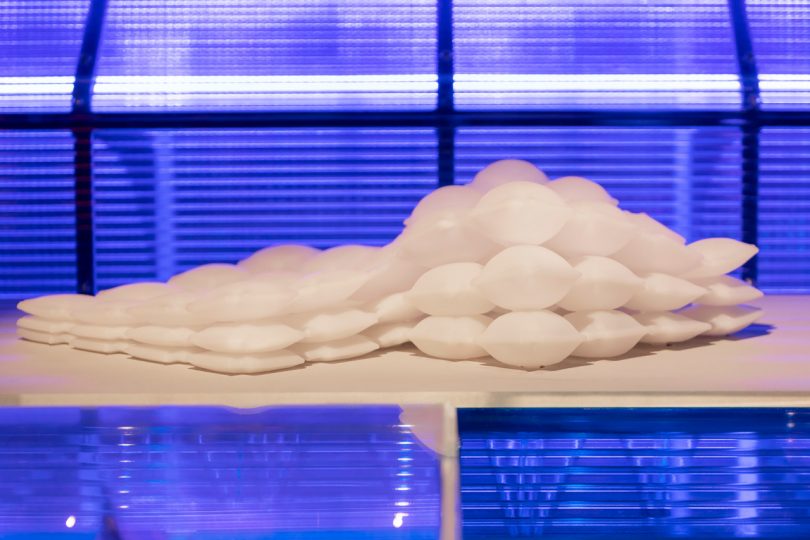In the near future car interiors may transcend the limitations of today’s fixed passenger layouts, capable of morphing into different configurations as desired using adaptable 3D-printed inflatable structures as developed by researchers at BMW Design Department in collaboration with MIT’s Self-Assembly Laboratory.
On display at the V&A for The Future Starts Here exhibition, the collaboration between the BMW Design Department and the Massachusetts Institute of Technology Self-Assembly Lab explores the possibilities offered by complex printed silicone assemblages connected with precise pneumatic controls to manipulate volume and shape. The effects are not unlike watching the initial malleable bodies of arthropods as they emerge from larval state.
In configurable groupings, the technology is envisioned to offer automotive interior designs the ability to design cars with cabins capable of transforming, adapting, and morphing from one state to another. At the touch of a button, seating could be moved, or even added, to different sections of the cabin; in regards to safety, the system could be utilized to offer reactive impact protection for all passengers within.
“The outcome of this collaboration manifests that a new material future is imminent…Interiors could even take on malleable, modular uses. This adaptive material technology points towards a future of transformable surfaces for adaptive human comfort, cushioning and impact performance,” explains Martina Starke, head of BMW Brand Vision and BMW Brand Design at BMW Group explains.

The Liquid Printed Pneumatics exhibition operates with complex liquid-printed air and water-tight inflatable shapes configured into groupings to form ever more complex and immersive transformable structures, with seven independent chambers to create different movement patterns.
Because both shape and firmness are manipulatable, BMW designers will one day be able to explore passenger vehicle design outfitted with adaptable living spaces no longer limited by set definitions of current front and back seats, an intriguing idea when factoring in the looming promise of autonomous systems.
from WordPress https://connorrenwickblog.wordpress.com/2018/06/13/bmw-and-mit-envision-automotive-interiors-that-can-change-shape/






No comments:
Post a Comment